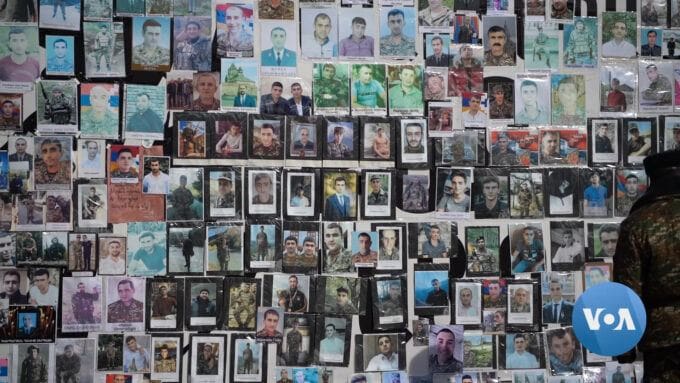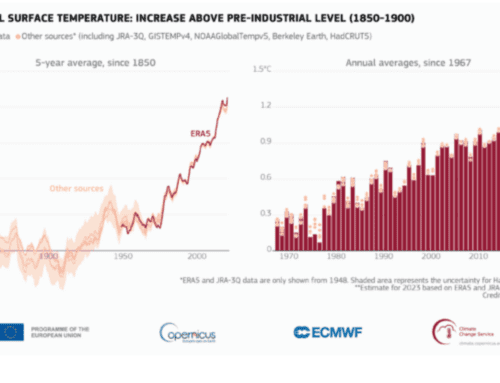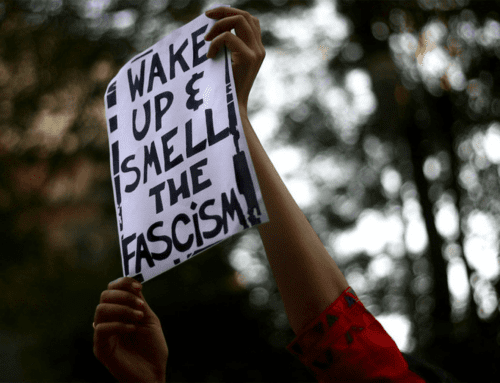

Can Another Armenian Genocide be Stopped?


Photograph Source: VoA News – Public Domain
Filmmaker and Producer Peter Bahlawanian is doing everything in his power to alert the world to the dangers confronting the people of Artsakh, the self-proclaimed Armenian republic located inside western Azerbaijan. To most of the world, this region is known (and was so-named by Stalin in 1921 when the Soviets took over the region) as Nagorno-Karabagh, even though it has long been populated by a majority of Armenians. Bordering Artsakh to the west is the larger nation of Armenia. Both Artsakh and Armenia have been embroiled in conflicts with Azerbaijan ever since the dissolution of the Soviet Union in 1991, yet the world appears largely ignorant about this part of the world, a fact that will be explored in this article as to why.
Beginning in 2021, military forces from Azerbaijan have been occupying the hills that surround and enclose the rural Armenian villages of Artsakh, trapping them in what some residents –all unarmed — liken to concentration camps. For them, memories have been rekindled of the horrific genocide of Armenians by the Turks that killed over 1.5 million Armenians between 1915 and 1917 — especially since Turkey, which has always denied responsibility for the earlier genocide, has allied itself with the Azerbaijanis.
At the time of writing, new conflicts have erupted between Azerbaijani forces and Armenians, triggering fears of a spring offensive aimed at displacing if not eliminating the Armenians of Artsakh. This is not just a local fear. U.S. intelligence is warning of renewed aggression by Azerbaijanis (who are Moslem) against Armenians (who are Christians).
If ever there were a teachable moment, this is it. Bahlawanian, who feels an obligation as part of the Armenian diaspora, has been spreading the word with a new sense of urgency through his film, The Desire to Live, which brings you into the hearts and souls of the surviving residents of Artsakh. In my interview with him, he credits the film’s director, a local woman named Mariam Avetisyan, for “talking to the people in the villages like nobody else could. She could get them to spill their beans, and talk about their lives and what they had lost. Very compelling.”
The film has already won 136 awards from 72 festivals worldwide. Included in the awards is the musical score of composer Alan Derian, whose use of minor Oriental tones accented with staccato drumbeats enhances a sense of tragedy, foreboding, and defiance.
The Desire to Live: What it Tells Us
The film opens, necessarily, with a map, since most people do not know where Artsakh is, let alone even heard of it. (I will discuss this further down, for the Armenians have suffered what I call the “curse of location,” wedged between the Caspian Sea and Black Sea. The lands are rich in minerals, and both bodies of water are highly prized for their abundance of oil and natural gas).


To further orient viewers, the film provides a brief history of the conflicts between Armenia and Azerbaijan, followed by wrenching personal narratives from the people of Artsakh.
We learn how some of the villagers escaped the pogroms that began in 1988 in Somgait, a petro-port on the Caspian Sea some 20 miles south of Baku, the sprawling oil-rich capital of Azerbaijan. More atrocities occurred in Baku in 1990 when Armenians were again hunted down, dragged from their homes, and killed for wanting to form their own republic separate from Azerbaijan.
Other villagers recalled the devastating three-year war between Azerbaijan and Armenia between 1991 and 1994 that killed over 100,000 people on both sides. This happened, Peter explains, when ex-Soviet Republics became independent and created their own territories. “Armenia created its own country and Azerbaijan created its own country Then there was the fight over the land, which was primarily Armenian. 90 percent voted to separate from Azerbaijani rule, but the Azeris wouldn’t accept it.” That, he says, is how that war began.
When hostilities finally ended, “Armenians continued to spend most of their time and energy building their country, while the Azerbaijanis spent their wealth on building their military–which led to the 2020 war.”
Why the military build-up in Azerbaijan? We’ll get to that too.
Most of the horrors of the 2020 war come through in the film with shocking details of collapsed buildings and ravaged farmlands, shattered by Israeli and Turkish drones and missiles. Villagers describe how Azeri forces invaded their homeland and for the next 44 days, bombed their homes, their farms, and their churches, killing 6,800 soldiers and displacing around 90,000 civilians.


Today, the people of Artsakh are suffering under a near 90-days-old blockade that prevents travel along the so-called Lachin Corridor connecting Artsakh and the rest of Armenia, depriving the villagers of food and cutting off their natural gas supplies via a pipeline originating in Armenia.
The Azeris claim that they are legitimately protesting gold mining operations in Artsakh that pose risks to the environment, a rather dubious argument coming from them since Azerbaijan hosts some of the largest oil-polluting operations in the region, if not the world. Peter says they are not real protesters, but rather government employees and soldiers posing as protesters.
The UN’s International Court of Justice in the Hague ruled last month that “Azerbaijan shall take measures to ensure unimpeded movement of persons, vehicles and cargo along the Lachin Corridor in both directions.” Will this ruling be enforced? So far, the blockade continues.
Bahlawanian says the West has been largely silent about the ongoing tragedy, even after then-Speaker of the House Nancy Pelosi flew into Armenia’s capital Yerevan the day before Armenia Independence Day (September 21, 1991). Her visit succeeded in holding the Azeris at bay on September 21st as she pledged US support for the Armenians. Since then, he says ruefully, “not much has happened in Congress.” He was in Armenia at the time of Pelosi’s visit.
“What was behind it?” I asked Peter. “Politics,” he replies. Pelosi’s home state of California has a large Armenian constituency; California’s Rep. Adam Schiff, not one to mince words, has denounced the ongoing attacks as genocide. Congressman John Menendez of New Jersey, whose wife is Armenian, has also spoken out, but the rest of Congress has been muted in response.
Again, one must wonder why, and in the course of our conversation, we sought answers, especially since scenes from Peter’s film are stark reminders of the ongoing war in Ukraine. We concluded that this was no coincidence.
But First, Some Personal and Historical Context
What made our conversation somewhat unique is our “Lebanon connection.” Bahlawanian’s grandfather survived the genocide of 1915 and grew up in an orphanage in Lebanon, as did his grandmother. His parents were born in Lebanon, but eventually moved to Canada where Peter was born.
Beirut, Lebanon is also my place of birth. My grandmother was a missionary-educator who taught biology to Christian Armenian girls in 1900–01 at the American College for Girls in Constantinople (now Istanbul). Her tales of living in Turkey’s Ottoman Empire, which at the time controlled the Middle East, made a deep impression on her son (my father), who after graduating college would take up a teaching position in Lebanon at the American University of Beirut from 1933–35. There, he met my mother, a high school teacher at the American Community School. He fell in love with her - but also through his multi-ethnic students at AUB, with the people of the region. He changed his major at Harvard from European history to doctoral studies in Islamic history, with both fields making him an attractive candidate for espionage during World War II.
He returned to Beirut in 1944 as U.S. Cultural Attaché, his wartime cover for his work as America’s first master spy in the Middle East. From 1944–46, he worked for the Office of Strategic Services (OSS) and in 1946–47 for the Central Intelligence Group (CIG, immediate precursor to the CIA). He died in a mysterious plane crash in 1947 following a top secret visit to Saudi Arabia.
One last personal anecdote that explains my concern for the Armenian people. My widowed mother returned to the US with her three young children (I was two months old at the time) and my parents’ much- loved Armenian maid, Mary Bedoian. With my mother’s and grandmother’s help, Mary found an Armenian suitor, Johnny Mekjian, married him and every year, in a gesture of thanks, hosted the Dennett family to an Arabic feast. This was my first introduction to the Middle East — through such tantalizing food as hummus, baba ganoush, shish kebab and tabouli. This was a major reason why I happily agreed to return to Beirut with Mom in the mid-sixties to finish high school at the American Community School. A decade later, following her death, I would become a journalist in the Middle East, based in Beirut. I distinctly remembered seeing Armenian women in brightly-colored costumes going in and out of a large, tin-paneled refugee camp lining the road to the airport.
I would later experience a burning need, not only to investigate the death of my father, but also to tell the truth about that part of the world that most Americans never got from their politicians or the mainstream media. Peter Bahlawanian had a similar goal: To spread awareness of a too-often untold story, in his case, about the suffering and resilience of the Armenian people.
A film is Born.
I asked Peter how and why spreading awareness through filmmaking would become his mission.
As he grew up in Canada, he explained, he was troubled that no one around him seemed to know anything about Armenia. “My grandfather was six years old when he survived the 1915 genocide,” he said. “I figured if my grandparents could survive the genocide, then it was incumbent on me as a member of the Armenian diaspora to explain their history and spread awareness of their plight, past and present.” By creating a business of selling spices retail– all sorts of spices — he was able to self-finance his filmmaking, freeing him from outside pressures to follow official narratives.
Peter has studied filmmaking and has made other documentaries. But it was the war that began in September, 2020 that “lit my fire to make films about what had just happened.” He met up with a young woman from Stepanakert, which is the main city of Artsakh, who filmed the horrors of that 45-day war while working for Artsakh TV. I saw her footage and thought it was beautiful.”
He asked Mariam Avetisyan if she would consider working with him. “That’s how it started. We started filming right away. Then in 2021, we would post an episode every week on YouTube. We did that for months and months. The whole first season came out that way on how the post-2020 war affected the people of Artsakh. Then I started a second season and kept the same crew.”
After the second season he felt Mariam was getting burnt out. “She kept seeing repetitive things happening and not much happened. She kept looking for answers and not finding them.”
That’s where the idea of making a feature-length documentary came up. “Although YouTube is free and a lot of people have access to it,” he explained, there’s so much material online that it’s difficult to attract attention unless you promote it. So, I came up with the idea of doing new footage and combining it with old footage which she gave me. The result is an hour and a half film that will help somebody who has no idea of what’s going on. I started sending it out in October 2021 to festivals and eventually entered over 300 film festivals and we got a lot of traction that way.”
“We did a third season with new episodes last year. The Azeris cut off gas in the middle of winter in Artsakh. We documented that. They have a lot of commitment to survival.”
That’s when I noted that the film’s scenes of destruction in Artsakh were reminiscent of the war in Ukraine.
In one scene, an elder is complaining that “they shoot every day. We are in a true ambush.” Everywhere you look,” he says “you see Azeris. There are drones in the air. Some say they are Russian; others say they are Azeris. Whatever the case, we live in fear.”
In another scene, a woman laments the loss of her 18-year-old son, struck dead by a bomb that also killed 29 people.” I looked for him in every morgue. But they wouldn’t let me see his body. I was told to remember him as he was.”
A young boy describes finding cluster bombs in the place where he used to play. “Our elders prayed that we would not see what they saw. In fact, it appears we witnessed worse. Everyone lost a loved one: a son, a father. a brother.”
Villagers describe how they used to work in the fields. They had cows and pigs. It was a good livelihood. “Now we are not able to farm. They snatch our cows. There are no jobs. The 2020 bombings destroyed livelihoods.”
Worse still, it didn’t make sense. Just as with Ukraine, where bombed-out civilians asked what the unprovoked war was all about, here too many Armenians in Artsakh asked the same question: why?
Peter agreed with the Ukraine analogy. “Absolutely. It’s a prelude to Ukraine and Russia. If President Aliev [of Azerbaijan] would have been held accountable for war crimes for what he did in 2020, I don’t think he would have done what he did by signing a security pact with Russia on the eve of Russia’s invasion of Ukraine. Putin played a big part in the war in Armenia, with Aliev of Azerbaijan allying himself with President Erdogan of Turkey. Russia and Armenia also have a security pact and Russia didn’t support that pact at all.”
The present prime minister of Armenia, he continued, “came into power a few years ago. His goal was to get away from the Russians and get admitted into the European Union. The more he showed he wanted to go toward the European Union and its democratic values –Armenia has always tried to be a democratic nation with free elections — the more Russia stood in the way and let the hounds free. Now you have the mounting up of Azerbaijan’s military in recent decades. With that, Covid, and Trump you had the makings of a perfect storm. I mention Trump because he also had extensive dealings with Azerbaijan.”
What were Trump’s interests?
“He has huge hotels and other dealings with the Aliev family. I didn’t have proof until it came out afterward in the press.


Trump’s Hotel in Baku.
But the problem was it wasn’t just Trump. I realized Biden came out and condemned the blockade and basically recognized Armenia. But then he had given $100 million in military aid to Azerbaijan.”
Seeking a Geopolitical Explanation: Did Oil and Pipelines Play a Role?
At this juncture, I ventured that I thought the war in Ukraine was actually a proxy energy war pitting the US and its NATO allies against Russia, all of them key players in The Great Game for Oil. The Game — deadly at times — involves intense rivalry among great powers to control oil and protect the pipelines that deliver it. Why? Because oil is the fuel of the military. Germany lost two world wars because its tanks and airplanes ran out of gas. This fact cannot be underestimated. It is the reason why fossil fuels continue to be the most prized and sought-after resources in the world. The competition to control these vital resources is intense.
This reality could also apply to Artsakh. As I suggested to Time Magazine back in August 2020, “The conflict [between Azerbaijan and Armenia] is best understood in the context of pipeline politics involving major powers jockeying for geopolitical influence in the oil-rich Middle East and neighboring Caucasus. American and British oil companies have since the mid-1990s poured billions of dollars into Azerbaijan, whose three major transnational oil pipelines run only a few miles from the Nagorno Karabakh [Artsakh] line of contact.…” Small wonder, I added, “that regional leaders and their intelligence agencies are watching the whole region with heightened concern. A single spark could set off a conflagration that could engulf the entire world.”
That worry persists three years later.


(green) BTC: Baku-Tbilisi-Ceyhan oil pipeline (via Georgia, Caspian to Mediterranean) (brown) Baku-Tbilisi-Erzurum gas pipeline – parallels BTC (red) Baku-Supsa oil pipeline (via Georgia, Caspian to Black Sea) (blue) Baku-Novorossiysk oil pipeline (via Russia, Caspian to Black Sea) Source: Wikipedia.
My [extensively footnoted] book, Follow the Pipelines, had concluded that all the post-911 wars in the Middle East were energy and pipeline wars. One could even go back as far as World War I to discover that seizing the oil of Iraq was a “first class war aim” for the British. The British Navy had recently converted its fuel supply from coal (of which Britain had plenty) to the cheaper and more efficient oil (of which Britain had none), causing First Lord of the Admiralty Winston Churchill to ruefully conclude in 1911 that Britain would have to “fight over a sea of troubles” to get enough oil. Great Britain succeeded in its mission and seized Iraq and its oil. In the 1930s, the Iraq Petroleum Company, headquartered in London, built a pipeline that terminated in Haifa, Palestine under the control of the British Mandate. That’s just one example.
Here’s another, concerning Armenia. After World War I, President Wilson had called for the US to assume a mandate on Armenia’s behalf under the aegis of the League of Nations to, among other things, make Baku part of Armenia. But after Soviet forces laid claim to this major oil port, Wilson’s plan for an American mandate in Armenia fizzled out. I recall that an American diplomat said at the time, “Too bad for Armenia, now that it doesn’t have oil.”
Peter agrees that “oil and pipelines play a big part in it. Azerbaijan is super oil-rich. Their fiscal budget toward military spending is higher every year than the whole budget of Armenia. Every year the US sends $100 million in military aid to Azerbaijan.”
Initially, he thought the fighting between Azerbaijan and Armenia had something to do with Azerbaijan’s Trans-Anatolian Pipeline [TANAP] to Turkey, which received $500 million in funding by the European Bank of Reconstruction and Development and was completed in 2019.


The Trans-Anatolian Pipelines (TANA)
“I figured that was why the Azeris wanted to take the land. They didn’t want to go around Armenia and Artsakh to get their pipeline to Turkey.” But then he realized that the pipeline was built in Azerbaijan above Armenia and Artsakh, so he figured there was no need to occupy those countries.That got him looking at the mineral resources of Artsakh and Armenia. “There are mines in Artsakh with elements used in microchips which Armenia controls. They have not been harvested. Azerbaijan already sold the mining exploitation rights to the Anglo Asian Mining Company, which is a European-based company with links to the US.” He discovered that the ex-Governor of New Hampshire, John Sununu, is on the board and Sununu’s family has connections to the company. “There’s the link to American political figures involved in the mining. They have already paid Azerbaijan $3 billion to have access to the mine, but it’s not in their control, so now they are doing what they have to do to get it.”
The Curse of Location
Bahlawanian, through his documentaries, has become acutely conscious of the Armenians’ geographic vulnerability. “With all the funds that are coming into Azerbaijan, President Aliev is using the military to take over the entire landscape. It all started with speeches by his ally, Turkey’s President Recep Tayyip Erdogan in 2015. The so-called self-made Sultan of the Turks has Pan-Turkik goals to create one unified area stretching from the Bosphorus in Turkey to China.” Armenia, he suggests, “is a speck on the map which they want to erase. Just like back in the Ottoman time when the Armenians lived under the Turkish Ottoman regime. They see Armenia as irrelevant, and they wanted to get it off the map and turn it into part of Turkey. History is repeating itself.”
Toward the end of the film, several of the villagers state their fears that the genocide of Armenians a century ago is indeed repeating itself, starting with the Azerbaijani pogroms of 1988 in Sumgait and more attacks in 1990 in Baku, both major oil ports on the Caspian Sea. “They would beat people up in buses and throw them out,” recalled one. “They were mocking and humiliating us. ‘Are you Armenian? Go back to your villages.’”
An ex-soldier set the tone — and the title — of this film. “Everyone has fear in their hearts because they have the desire to live. The question is, how long does it take you to overcome the fear?”
“The Armenians lived for decades under the Soviet regime,” Peter told me. “There were little crises but when they decided to separate and ask for sovereignty in Artsakh, that’s when the pogroms happened. Armenians in Baku and Sumgait were beaten up, killed, driven out of their land; that’s when it became real, the memories of genocide. I have a new documentary highlighting this.”
Arteries of Empire and The Bypass Game
After our conversation, I decided to dig even deeper into a possible oil and pipeline connection to the conflicts between Armenians and Azeris. Artsakh’s minerals would clearly benefit the Anglo-Asian Mining Company, but I couldn’t shake the feeling that there were even bigger stakes involved encompassing a wider area. For all the years I investigated my father’s death, I had become a committed pipeline-tracker.
I had discovered the many geopolitical intrigues surrounding a major American pipeline project developed during World War II that affected not only the Middle East, but also Europe and the Soviet Union: The Trans-Arabian pipeline, or TAPLINE. a subsidiary of the Arab American Oil Company (Aramco). This was a multi-million dollar project that would help Europe recover from the war by replacing Communist-run coal mines with US-supplied Saudi oil. An American diplomat in Saudi Arabia and contemporary of my father referred to the planned Trans-Arabian pipeline, or TAPLINE, as “one of the great arteries of empire, the American Empire in the Middle East, I mean, which in fact it was.” During his visit to the American compound in Riyadh, Saudi Arabia in March 1947, Daniel Dennett ruefully observed in a letter home that the Company had taken over the role of the government, on the model of Britain’s imperial East India Company.
The New York Times did a major story about TAPLINE on March 2, 1947, just weeks before my father’s visit to Saudi Arabia to examine the proposed route of the pipeline. The piece, featured in the Sunday edition, was headlined “Pipeline for US Adds to Middle East Issues.” It carried a noteworthy sub-head, “Oil Concessions Raise Questions Involving Position of Russia.” Written by Clifton Daniels, President Truman’s son-in-law, the article revealed that “protection of that investment and the military and economic security that it represents inevitably will become a pivot of world politics and one of the main focal points of rivalry between East and West.” (Emphasis added.) It was Saudi oil, transported by TAPLINE over desert, through Syria’s Golan Heights, and terminating in southern Lebanon that catapulted the United States into superpower status, not just in the Middle East, but the world.


The dotted line shows the projected route of the Trans-Arabian pipeline in March 1947. TAPLINE ended up terminating in southern Lebanon, 124 miles away from Israel. The forked pipeline was built in the 1930s by the Iraq Petroleum Company, the sourthern line terminating in British-controlled Palestine, the northern in French-controlled Lebanon. Credit: Chelsea Green, “Follow the Pipelines”.
After suing the CIA under FOIA, I discovered that my father’s partially declassified “Analysis of Work” written in 1944 revealed that his mission to the Middle East was “to control the oil at all costs.” The Soviet Union, for its part, regarded TAPLINE as “a dangerous auxiliary enterprise of the American effort to establish an air base in Saudi Arabia.” TAPLINE was built in 1949, following the CIA’s first-ever coup that toppled Syria’s nationalist president (a known anti-Zionist who opposed the pipeline’s termination in Israel) and replacing him with a pro-Western, pro-Israel police chief. The pipeline would end up terminating in southern Lebanon, some 124 miles away from Israel, which would become its primary military protector.
Fast-forward half a century to the post-911 years, and we find that the competition between the Russians and the US has continued full force. In 2002, Nightline host Ted Koppel reported on the Baku-Tbilisi-Ceyhan pipeline (BTC) connecting the Caspian Sea to the Turkish port of Ceyhan on the Mediterranean Sea. At the time, the Caspian Sea was viewed by characters like George W. Bush and Haliburton’s Dick Cheney as the new Middle East. According to Koppel, the BTC pipeline became the “anchor of national security interests of the United States in Central Asia and the Caucuses that goes to the heart of an American policy goal; that is the uninterrupted transport of Caspian oil” — to Europe.
Uninterrupted was the catchword, requiring military protection against sabotage. The BTC pipeline, a consortium of eleven energy companies including BP, Chevron, and ConocoPhillips, was completed in 2005.


The Western-financed BTC pipeline, carrying oil from Azerbaijan to Turkey while bypassing Russia Credit: Chelsea Green, Follow the Pipelines.
Its backers hailed it as a triumph, as it passed through some of the most volatile areas in the world, feeding oil to Turkey and Europe while bypassing Russia and the extensive system of Soviet-built pipelines crisscrossing Europe, including Ukraine.
This map of Russian pipelines in Europe is from an article in Stratfor titled Pipelines for Empire by Robert Novak, who wrote, “Energy, not ideology, is modern Russia’s most powerful tool for influence in Europe.” Couldn’t the same be said about US ambitions in Europe? Novak’s wife is Victoria Nuland, the hawkish neo- conservative who worked for Dick Cheney and helped orchestrate the 2014 coup in Ukraine. She is now a top State Department strategist on the Ukraine war in the Biden Administration. Biden’s goal has been clearly stated: reduce Europe’s reliance on Russian oil and natural gas.
Over the ensuing years, the US poured money into Turkey to train Turkish military officers, who in turn would train the Azerbaijanis in weapons supplied by Washington. In 2008, Georgia (aligned with the West) and Russia came to blows near the route of the pipeline, causing fears of escalation and the start of World War III. Saner heads prevailed, but Russia keeps a watchful eye on what it sees as a Western effort “to redraw the geography of the Caucuses on an anti-Russian map.”
Turkey’s President Erdogan, welcoming the West’s view of his country as an emerging major energy corridor, has also cut deals with the Russians. Turkey serves as the terminal point of three Russian pipelines traveling beneath the Black Sea to Turkey: The Blue Stream Pipeline, inaugurated in 2005, the TurkStream 1 Pipeline, built in 2016–18, and the TurkStream II pipeline, operational in January 2020 — the latter running under now-Russian controlled waters in the Black Sea after Russia’s annexation of Crimea. As I noted, the Black Sea and the Caspian Sea are known to hold enormous volumes of oil and natural gas.
But in November 2019, Erdogan switched sides again by announcing yet another pipeline deal with Azerbaijan: the completion of the Trans-Anatolian Natural Gas Pipeline (TANAP) running from the Caspian Sea port near Baku to Turkey. Let’s take a look at this map again. It was described in the Associated Press as “a milestone in a major project to help reduce Europe’s dependence on Russian gas.” Erdogan was once again playing the Russian bypass game that he previously played with the BTC pipeline.
Said Erdogan: “Aside from ensuring the energy needs of our country with TANAP, we aimed to contribute to Europe’s energy supply security.”
Helping both the West and, conversely, Russia to supply energy to Europe. Erdogan has put himself in a powerful position. It appears that neither the US nor Russia want to harm their relations with Turkey and with oil-rich Azerbaijan. Both superpowers supply Turkey and Azerbaijan with military assistance. Russia, Peter discovered, signed a military agreement with Azerbaijan two days before the Russian invasion of Ukraine.
For their part, both Turkey and Azerbaijan have “Pan-Turkic” aspirations, as previously noted by Bahlawanian and described by journalist Yeghia Tashjian in a July 2020 report for the Armenian Weekly aptly titled, “The Geopolitical and Energy Security Dimensions of the Latest Armenian-Azerbaijani Clashes.”
The Turks, he writes, “believe that the territories stretching from Eastern Europe, Central Asia and some parts of Russia, Iran and China belong to their ancestors, and it is their right to reconquer these lands by arms.” The Azeris, he adds, also believe in a unified Turkic state extending from the Bosphorus to the Xinjiang province of China.
Could these huge sweeps of territory make Turkey and Azerbaijan the aspiring Oil Lords of the World of a revived Ottoman Empire? For as Henry Kissinger, protégé of oil scion Nelson Rockefeller once said, “Who controls the oil controls the world.” Is that why the two most powerful petro-nations in the world, Russia and the US, are exercising their military influence over the region, Armenia be damned? Even wiped out?
Russia under Putin has similar revivalist ambitions, recovering a lost empire while invoking the sacred theme of Mother Russia to justify his invasion of Ukraine. As a largely Christian nation, Russia has always played the role of protector of Christian Armenians, a fact that has not escaped Turkey, a Muslim nation, going back a century when some Armenians sided with Russian efforts to weaken the Ottoman Empire, further inflaming nationalist Turks against Armenians living in Turkey. But now, with the Americans supplying military aid to Azerbaijan and Turkey, first to protect the BTC pipeline in the early 2000s and later, the TANAP pipeline, the Russians have increased their military support of Azerbaijan and effectively allowing the Azeri incursions into Artsakh while ignoring their treaty obligations as Armenia’s protector.
In 2019 Turkey engaged in military drills with Azerbaijan, with participants wearing a badge “showing the maps of Turkey and Azerbaijan as unified and depicting the (overwhelmingly Armenian) regions of Ararat, Kotayk, Armavir, Aragatsotn, Shirak, Lori, Syunik, Meghri and Artsakh in Azerbaijan.”
As Peter explained to me, “Putin was credited with bringing the peace talks between Azerbaijan and Armenia in 2020, but he was also part of the beginning of the war. The reason why the war happened was because Putin turned his back on the Armenians and said, ‘OK, Aliev, go ahead. I won’t get involved. Do what you have to do.’ If Putin didn’t want that war to happen, it wouldn’t have happened.”
Lucine Kasbarian, writing for the Armenian website Keghart on the history of Turkey’s dream of empire, connects Pan-Turkism directly with genocide. “Pan-Turkism was a prime motivator for Ottoman Turkey to enter World War I against the Allies in 1914,” she notes. “In a bid for the pan-Turkic goal, Ottoman Turkey aimed to eradicate the indigenous Christian people who lived in what is today called Turkey — that is, Armenians, Assyrians, and Greeks.. The threat of a renewed Armenian genocide is a daily reality.”
Most Americans, indeed, most people in the world, are not aware of the oil connection to all these conflicts for the simple reason that oil remains the fuel of the military and, to quote my father, “must be protected at all costs.” In the interest of national security, the oil connection is routinely censored from media analysis and reports. But at what cost in human lives and national treasures?
The Armenians of Artsakh are bracing themselves for an Azeri spring offensive. Their plea is for the survival of their children. Who will care? I recommend this interview of Peter by Kristina Borjesson sounding the alarm for a potential genocide.
The geopolitical dimensions of the wars in Armenia, Artsakh and Azerbaijan need further scrutiny, including of the vast mining industries in the region. But of one thing I am certain: until the major powers of the world move away from gasoline for their military machines, we are going to keep having endless wars and tragic genocides.







